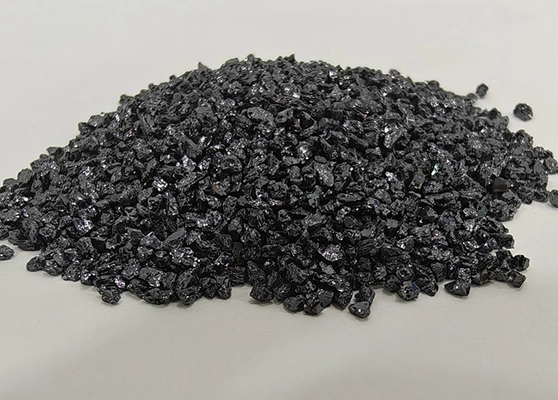Brown fused alumina (BFA) is a tough, high-density abrasive material made by fusing bauxite and other raw materials in an electric arc furnace. Its chemical composition is a critical factor in determining performance, especially in industries such as abrasives, metallurgy, and refractories. This article outlines the typical chemical profile of industrial-grade brown fused alumina and its implications for material selection.
Typical Chemical Composition of Brown Fused Alumina
The following table summarizes the common chemical constituents found in standard BFA products:
| Chemical Component | Typical Content (%) | Function |
|---|---|---|
| Al2O3 (Aluminum Oxide) | 94.0–96.5% | Core abrasive phase; determines hardness and durability |
| TiO2 (Titanium Dioxide) | 1.5–3.8% | Improves toughness and fracture resistance |
| SiO2 (Silicon Dioxide) | ≤ 1.5% | Impurity control; affects purity and reactivity |
| Fe2O3 (Ferric Oxide) | ≤ 0.25% | Unwanted impurity; must be minimized for high-end uses |
| Alkali Oxides (Na2O, K2O, CaO, MgO) | ≤ 0.40% | Minor elements; kept low to ensure stability |
Why Composition Matters in Industrial Applications
The chemical makeup of brown fused alumina affects not only hardness and abrasive properties, but also behavior under high temperatures and corrosive environments. For example:
- Abrasive Tools: High Al2O3 content ensures effective grinding and cutting without premature wear.
- Refractory Bricks: Low Fe2O3 enhances thermal resistance and structural integrity.
- Surface Blasting: Controlled TiO2 levels provide the right toughness for aggressive cleaning without damaging substrates.
Grades of BFA and Their Purity
Suppliers may offer various grades of brown fused alumina, such as:
- Regular Grade: Suitable for general grinding and sandblasting.
- High-Purity Grade: Designed for refractory or ceramic applications requiring tighter impurity control.
- Micro Powder Grade: Used for precision polishing, often with stricter Al2O3 and Fe2O3 limits.
CanAbrasive’s Commitment to Quality
At CanAbrasive, we provide full technical transparency for all our brown fused alumina products. Each product line—Coarse Grit, Powder, and Refractory Aggregate—is backed by a detailed specification sheet outlining chemical and physical parameters.
Whether you're sourcing for high-temperature furnaces or fine abrasives, our controlled compositions ensure consistent performance, global trade compliance, and reliable supply.
Conclusion
Understanding the chemical composition of brown fused alumina is essential for selecting the right material for your industrial application. High Al2O3 content, minimal impurities, and controlled TiO2 levels are key indicators of product quality. For consistent, export-ready BFA materials, partner with a trusted supplier like CanAbrasive.
FAQs
What is the minimum acceptable Al2O3 content in industrial BFA?
Generally, ≥94% is considered standard for industrial abrasives. Higher grades exceed 96%.
Why is TiO2 present in BFA?
TiO2 naturally occurs in bauxite and contributes to the material’s toughness.
Can low Fe2O3 content affect BFA pricing?
Yes, lower Fe2O3 means better purity and higher processing costs, which can slightly raise price points.
Request a Quote or Sample
Popular Products
Grünes Siliziumkarbid
View DetailsSchwarzes Siliziumkarbid
View Details